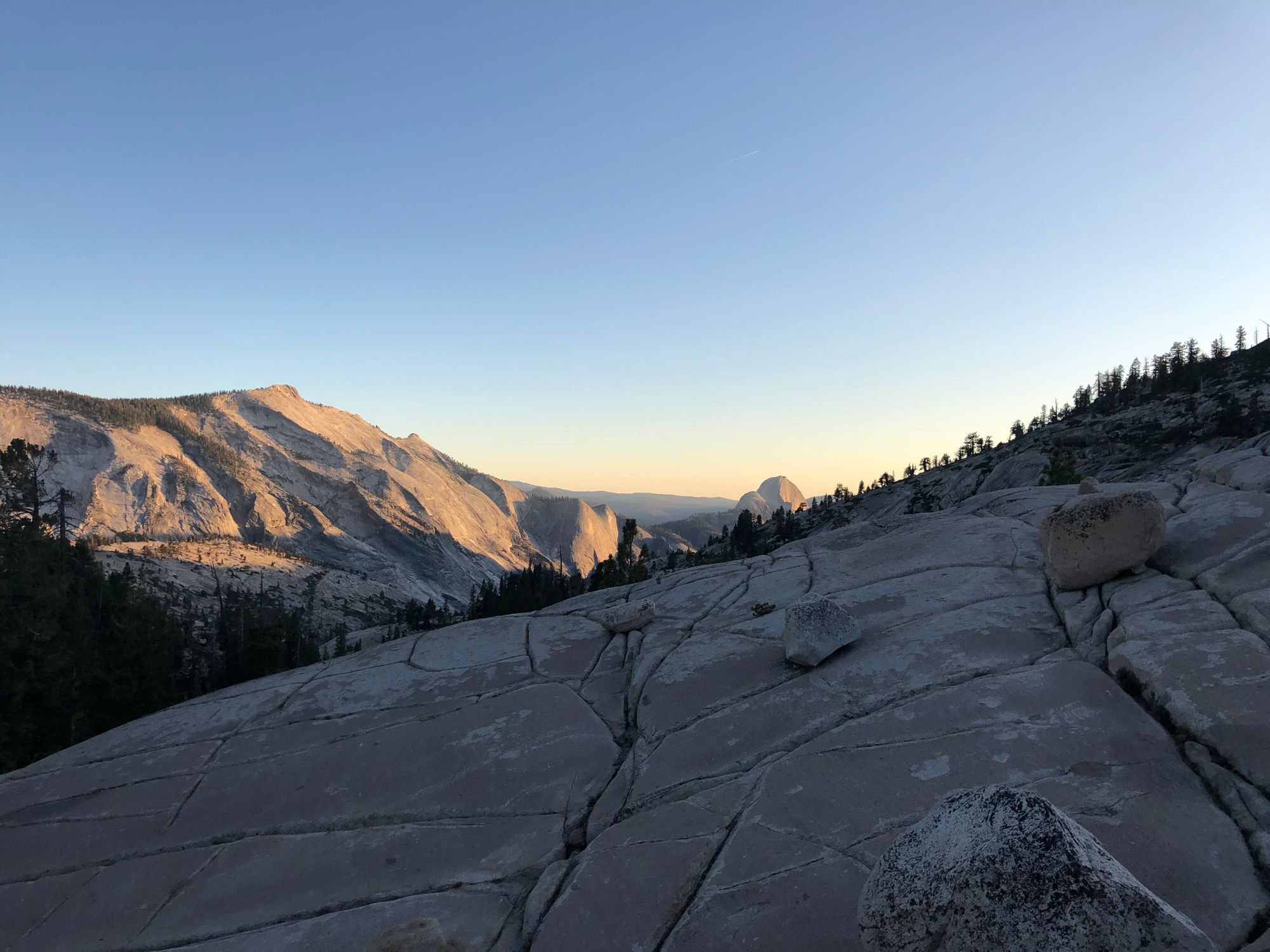Learning to Turn Back in Yosemite
In her best performance, she declared “This is not safe. Nothing else like it exists anywhere in the world. I can’t imagine the Parks Service would ever install anything like this today.”
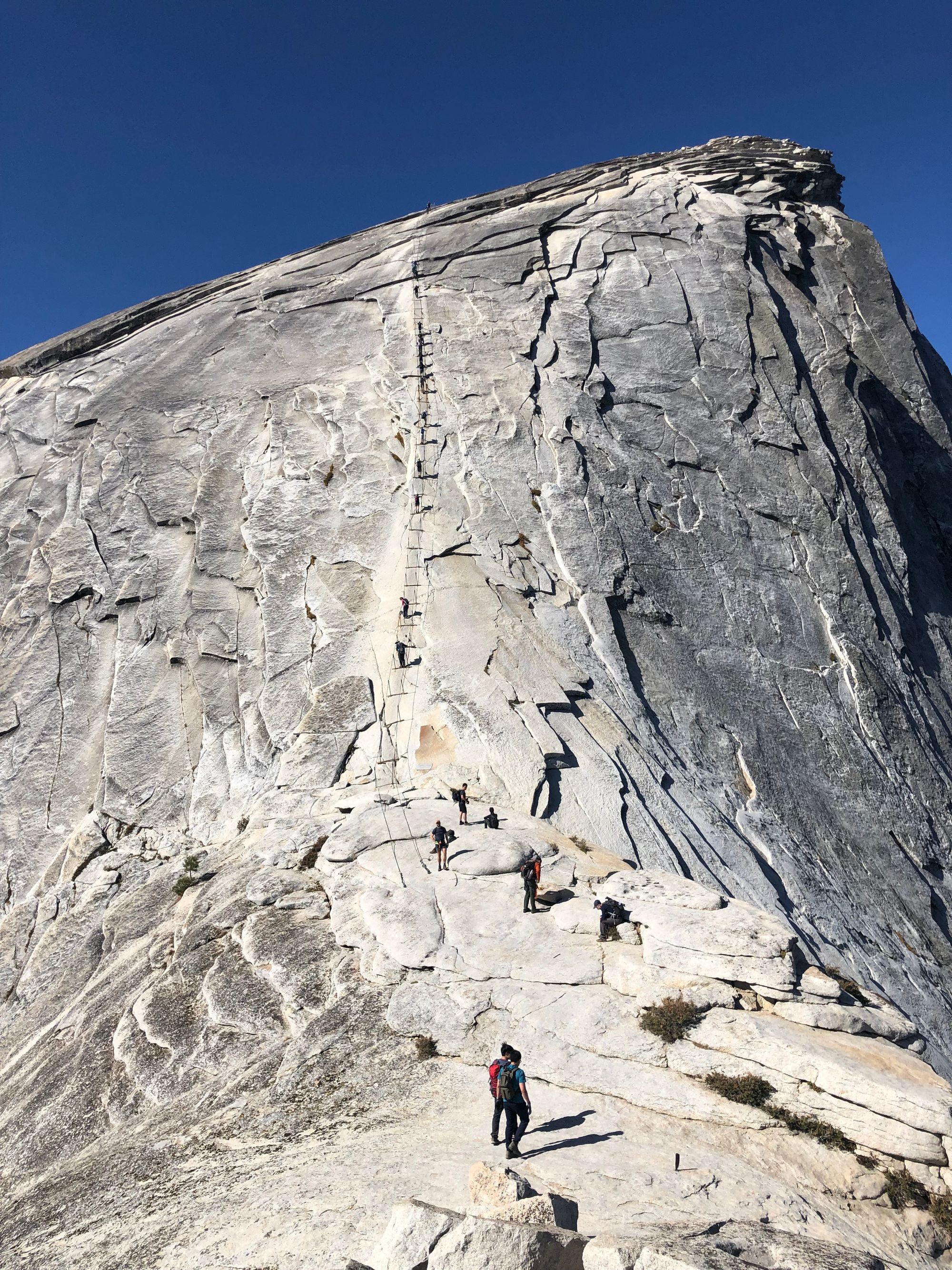
At about 10:00 AM Monday morning, I saw a plastic water bottle tumble 2000 feet off the side of Half Dome, the iconic granite peak in Yosemite National Park.
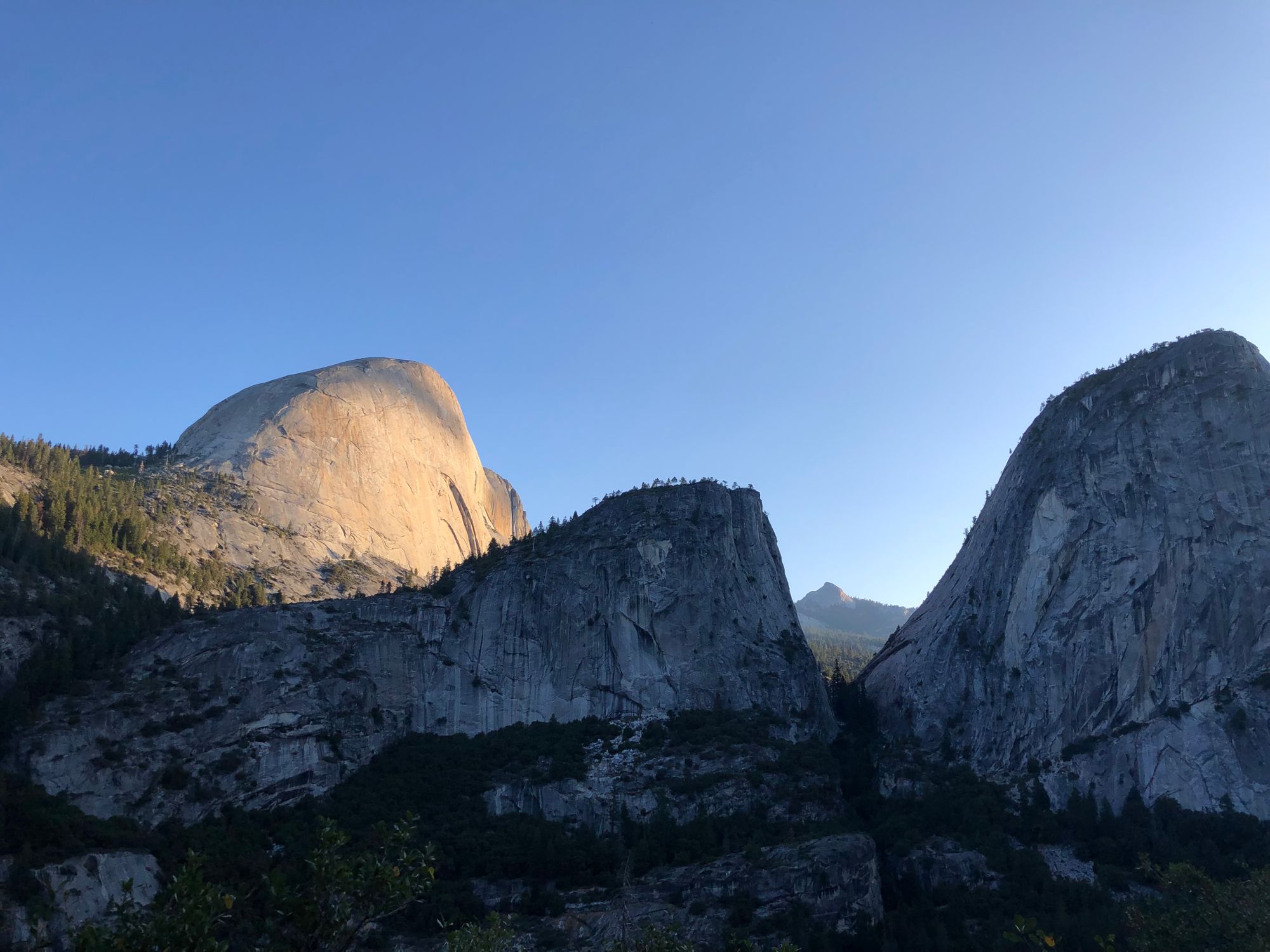
My sister and I sat at the base of its famous cables, eating PB&J sandwiches and trying to lower our heart rates while bathing in the sun. I had put salt on mine, betting that I could leverage some kind of Salt-Fat-Acid-Heat business. It tasted terrible, but I was hungry.
The day before, we had driven past Olmsted Point, where we pulled over to absorb our first view of Half Dome and take a photo of a group of Patagonia-clad would-be adventurers. Just hours prior, we had won the permit lottery and received permission to hoist ourselves to the top along the cables.
The iconic dome’s northern face is a sheer cliff that takes experienced climbers two days to scale, and south face rounds into a similarly steep, still less featured face. Those who explored the region even before John Muir did had declared that no person could ever reach the summit of the mountain. Some 150 years later, the National Park Service maintains a set of cables along which hikers can hoist themselves to the top along the more gradual East Face, which is likely a good deal wider than the 30 feet it feels like.
The cables run up the final 400 feet of elevation from “the sub-dome” to the East of the main summit. Every 10 or so feet along them, metal poles hold them into the rock, and a two-by-four haphazardly rests between the two poles, offering hikers a momentary sense of stability. Between planks, hikers pull their way up a bare face with a pitch online sources estimate to be between 45 and 60 degrees.
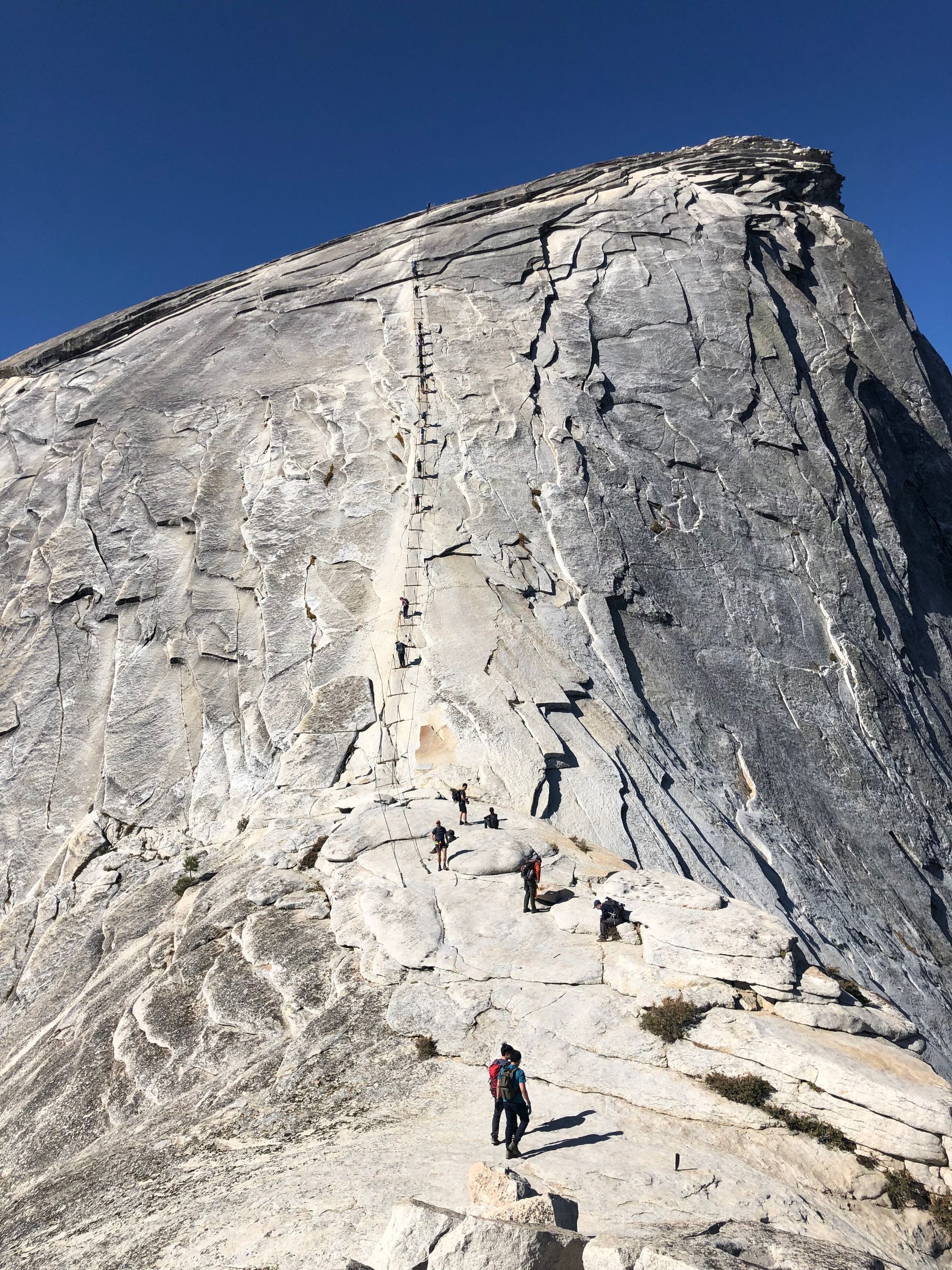
People’s lives rest on these cables, and Sammy saw somebody lift a pole clean out of the granite. Since 2012, the NPS has limited hikers to 300 permit holders daily. The ranger at the sub-dome checked each hiker’s permit and offered all of them a brief spiel, of which we heard a few versions.
In her best performance, she declared “This is not safe. Nothing else like it exists anywhere in the world. I can’t imagine the Parks Service would ever install anything like this today.” The ranger, it turned out, had long been afraid of heights. Indeed, a woman fell to her death earlier this month.
Fortunately, we overheard this after we had turned back from our summit push half way up the cables.
That morning, we had woken up in the dark at 4:30. We drove an hour from our glamp-site and hit the trail by 6:15, hoping to ensure enough time. We had hiked 9 miles and gained 4400 feet in elevation in fewer than four hours, determined to beat the crowds and have full daylight plus confidence on our way up this thing.
Despite jumping through all the requisite hoops, we turned around before the top. We had our various excuses: we visited on the one day out of the month when the acrophobic ranger worked, the people ahead of us looked unstable, the gloves I borrowed and Sammy brought didn’t have enough grip, I was too visibly scared and unwilling to admit it for her to trust me, this or that muscle was spasming, we had hiked too fast and were too tired.
We never had to use any of those, however. Everybody we passed on our way down focused too intently on their own shoes to ask why we turned back, and everybody at the base of the cables presumed we had made it the whole way. Later on our hike, we talked about whether we had lost, or whether we were smarter than everybody who went up.
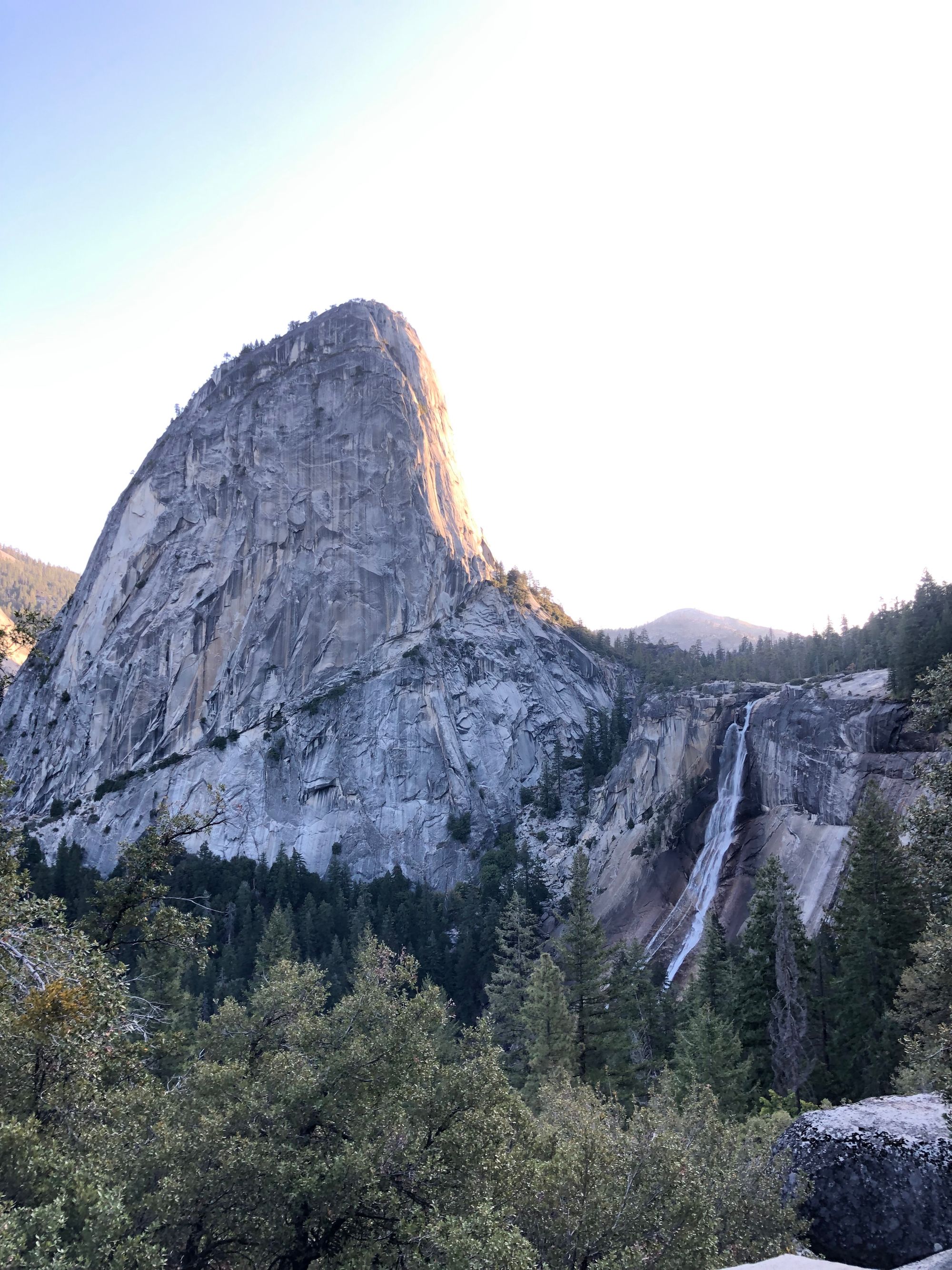
The people who make it to the top of the cables are neither naive, brave, nor reckless. Those who stay back are neither wise, cowardly, nor prudent. Much like Timothy Leary’s paramount Set and Setting, one has to be with the right group of people at the right time on the right day to do the cables. Beginning with a failure mindset and visions of catastrophe can end rather poorly. Identifying who decides to go along and who hangs back is incredibly difficult. Some of the people who do it look the part, and others look like aging professors. We could have lied to everybody and said that we made it all the way up, and nobody would have been the wiser.
Once back to safety, we tried to pat ourselves on the back for our maturity and levelheadedness, though we conceded that we had made it to about the steepest part, and that had we continued it likely would have been easier. Fortunately, I was still too frightened to be disappointed.
A passerby asked where we had turned back, looking for context. I said, “We made it just about to the inflection point.” She said, “Huh?” I chastised myself for such language and rephrased, stowing my high school calculus book.
We sat for a bit longer, until we heard a loud gasp echo down from the top. That was our cue, so we bid farewell to the ranger and trotted down the trail. As we made our way through a grove of Ponderosa Pines, I asked Sammy whether each tree we passed was a redwood. In between non-redwoods, we discussed whether the cables would continue to exist in the future, or whether they were a relic of the past.
My initial response had been that the cables will cease to exist on the day that the wrong child of a Long Island lawyer dies. Though the ranger had declared them unsafe, I felt pleased that we still had the opportunity to climb them in a world as risk averse and litigious as our own. Even in my lifetime, we have given up a great number of activities because of the practicalities of risk, insurance, and fear. Baseball games now have metal detectors and safety nets, and the Buckley School Father-Son Campout has been reduced to a one-day affair. Not that I bemoan these compromises as baseless like a crotchety old man, but the change is undeniable.
The park has featured in the popular imagination forever. In the immediate post-war, Warner Brothers introduced Yosemite Sam, a pistol-wielding mustachioed villain. Ansel Adams began to photograph it in 1919. In 2018, two of the most popular climbing movies ever released debuted, both focused on the park’s second most famous feature, El Capitan, the 3000-foot high cliff face known as the Everest of climbing. At some point, my laptop background became Half Dome. While Free Solo and The Dawn Wall inspired me to spend a bit more time and money at Brooklyn Boulders West Loop, I would have been at least as stoked to get to the valley without them.
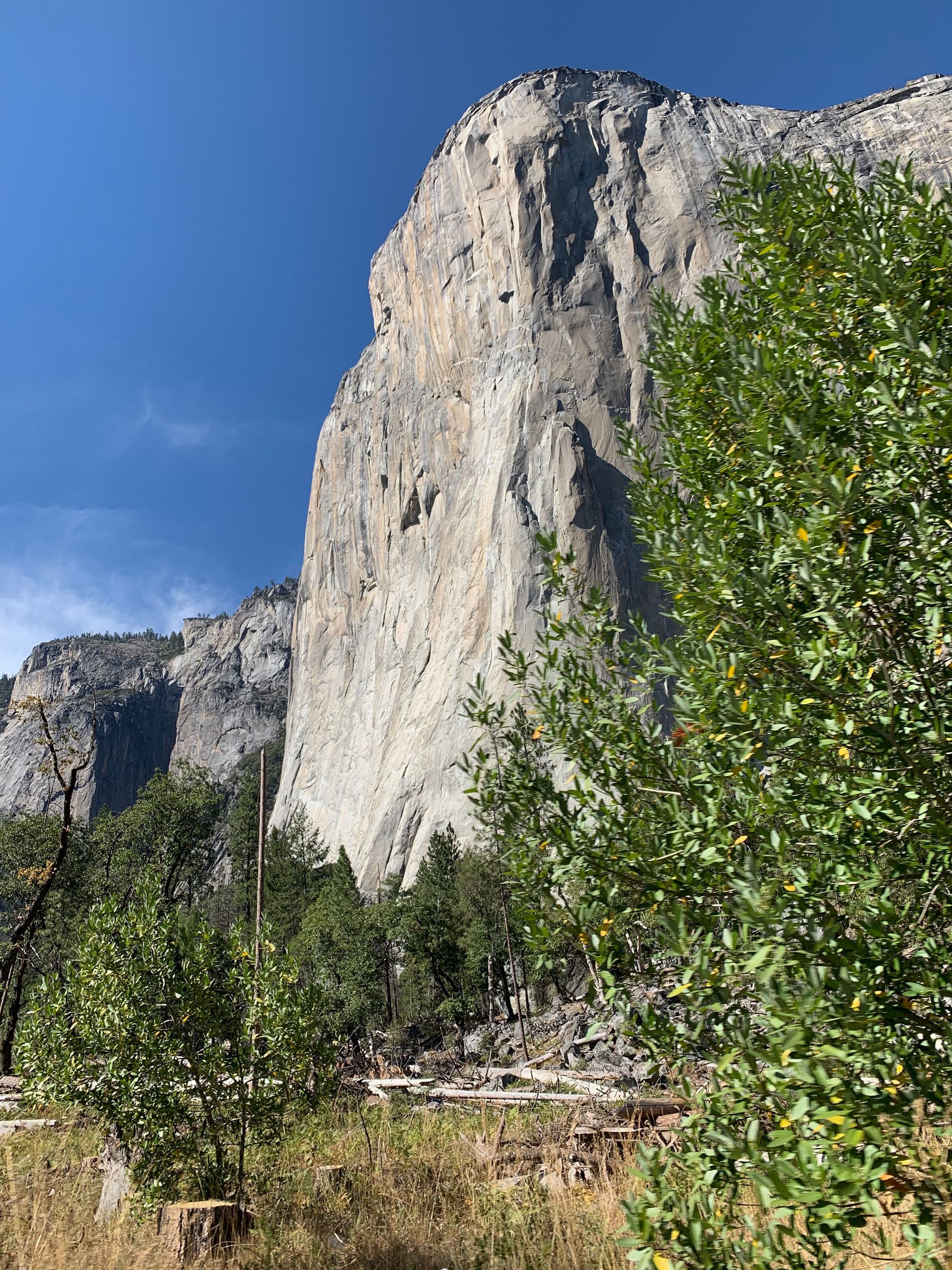
In a great many ways, nothing around the park has changed since the automobile took over America. Tourists have driven through here for years, gawking just as we do now. The granite walls and domes are between 85 and 120 million years old and will survive eons longer, provided the Yellowstone Super-Caldera does not explode before then. There is a post office in the valley, complete with PO Boxes, in an age when most of my peers don’t know how to buy stamps. There’s a full service garage in the valley, because enough tourists rear end each other, unable to keep their eyes on the road.
Tourists drive the same roads, hike the same trails, and take pictures of the same views. However, cautionary signs abound. From “Speeding kills bears!” to “‘We were just wading, not swimming.’ They both died,” the signs disrupt the trees and the waterfalls to warn of the errors of past visitors. Practically, the number of blunders can only increase geometrically along with passing time and growing popularity. The question becomes whether enough mistakes will build up to ruin everything.
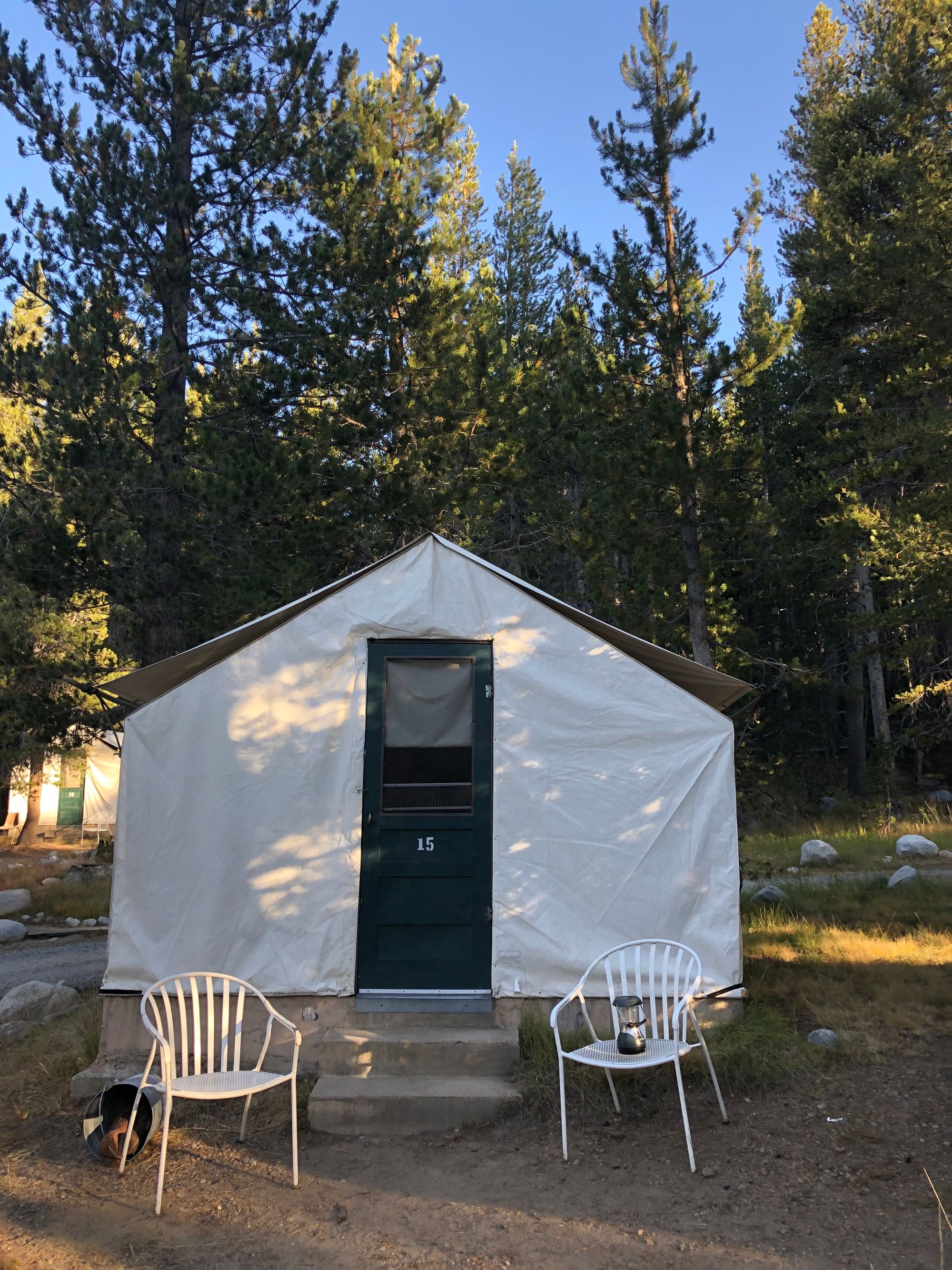
Like the signs, the most timeless of our pursuits bore inescapable indications of the present. The first evening, we slept in a platform tent with a wood stove, exactly like the one my father and I had stayed at once upon a time at Camp Sloan during the now-defunct Father-Son Campout. The Campout was the weekend I forget about when I tell people that my family never went camping. Under a wool blanket next to a wood-burning stove, we fell asleep warm. Around 3:00, we woke up freezing. In the morning, we asked each other where the logs went, failing to understand that initially why only ash remained. We then overheard a European say to a ranger first “What does 30 fahrenheit mean in celsius?” and then “Oh. Oh my. What’s the wifi password?”
The second two evenings, we stayed in a spectacular refurbished Airstream trailer. Some call them Land Yachts. The outside bore the iconic design of the postwar era, while the inside had a USB-chargeable lantern and Bluetooth speakers wired into the ceiling. We cooked in a cast-iron over an open flame. Less than a year after two cataclysmic wildfires, however, regulations confined us to compressed wood and charcoal. I struggled to light a fire because I didn’t buy lighter fluid, thinking all all charcoal was self-lighting. Some charcoal is self-lighting; ours was not. In my emasculating agony, I caved and bought more pre-packaged condensed wood from the auto-camp lodge. It turned out to cost only $7, compared to the $27 I had expected. In Maine, a cord of wood costs at most $5. When the airstreams were made, I’m sure it cost the same shiny nickel as a gum ball, a steak dinner, and college tuition.
Many of these rituals have taken place on all great road trips. Last year, when Sammy and I drove to Big Sur, I remarked that we were not a family that camped, and certainly not a family that took road trips. We have now seemingly joined this Great American Tradition. People we encountered from Australia, the Czech Republic, England, China, Japan, and Mexico have also joined the Great American Road Trip.
I found that fewer of the grand numbers of people shared my affinity for dunking in alpine lakes and streams. Twice, strangers called Sammy and me brave for grinning while swimming in 50 degree water. If only they could have seen me cower just shy of the summit! Each day, I found a chance to dive into water cold enough to limit my breathing. Each dunk took more of my breath away and made me feel more alive than any hike or view, but the latter are more easily documented.
All that we experienced in Yosemite, from the long hike and cables to the vistas full of dense pine forests and soaring granite formations, with frigid inundations in between, is timeless, even with periodic updates. The ranger, after all, checked our permits on an iPad, 4000 feet above the valley floor. I obsessed over making the most of it, squeezing in an extra view or getting out of the car for one more picture after a shorter hike, as though afraid that it wouldn’t be here when I come back.
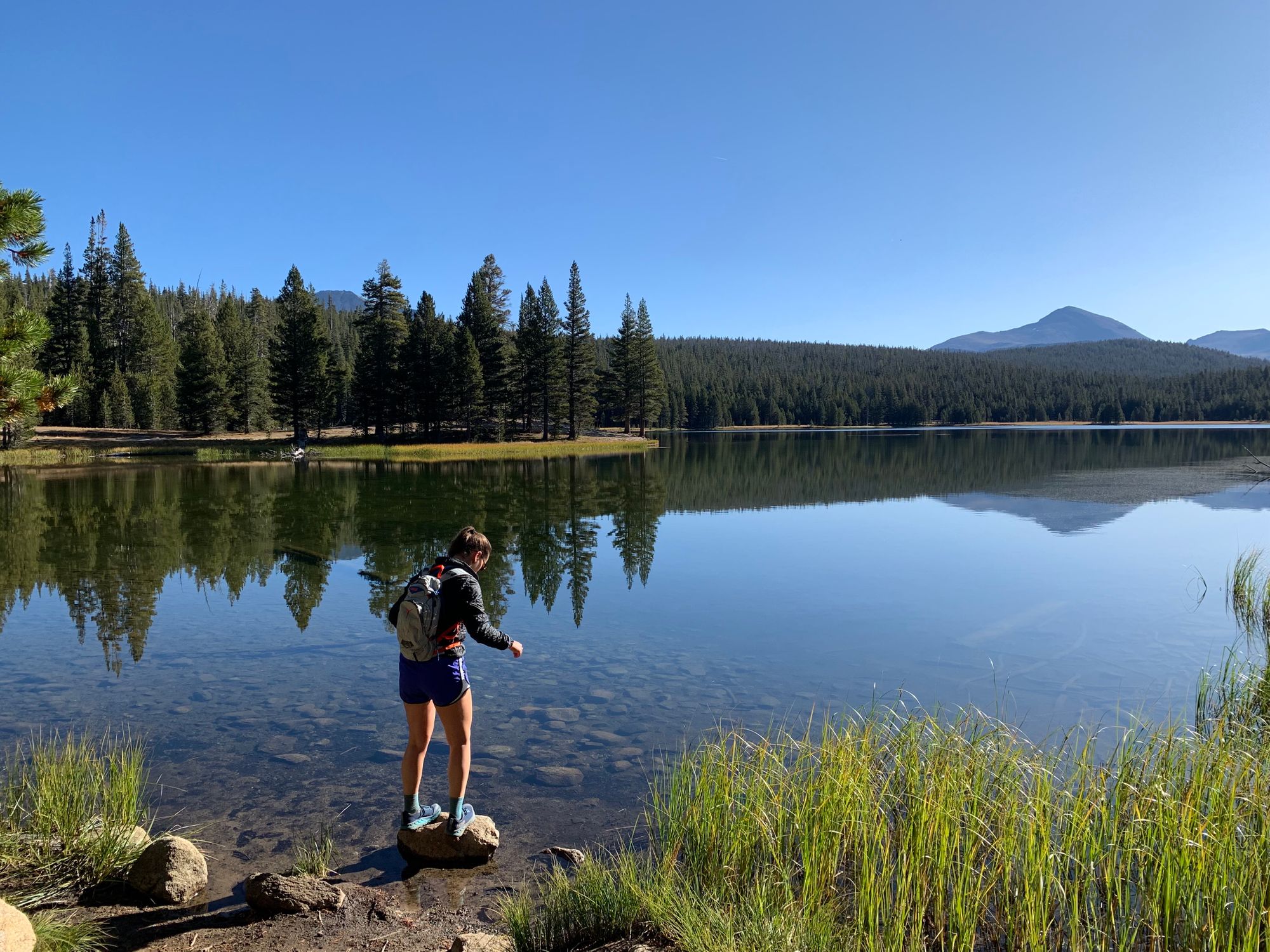
While I felt comfortable saving a trip to the Giant Sequoia groves for a time when I might be too feeble to hike up a granite dome and too poorly insulated to swim in alpine lakes, I felt a nagging sense that this might all disappear soon. While I don’t expect climate change to erode these cliffs, the oil companies to begin drilling in the Tuolumne Meadows, or a public utility to destroy the valley like the O’Shaughnessy Dam did just north at Hetch Hetchy, I did feel a sense of urgency.
Some day, in my lifetime, the Cables might come down, and the last two-thousand-year-old Giant Sequoia might die. In 1964, some jackass cut down a 5000-year-old bristlecone pine, the oldest living organism known at the time, so anything is possible. A granite exfoliation could wipe away the known climbing routes on El Cap or Half Dome, and the snowfalls might lessen enough to permanently dry up Yosemite, Nevada, and Bridalveil Falls.
Before then, I can only hope to return and stare down the terrifying face of the cables, or maybe even stare up the two-day climb on one of Half Dome’s easier routes. The very agelessness off Yosemite created a sense of urgency for me and revealed to me how much more time I want spend there.
